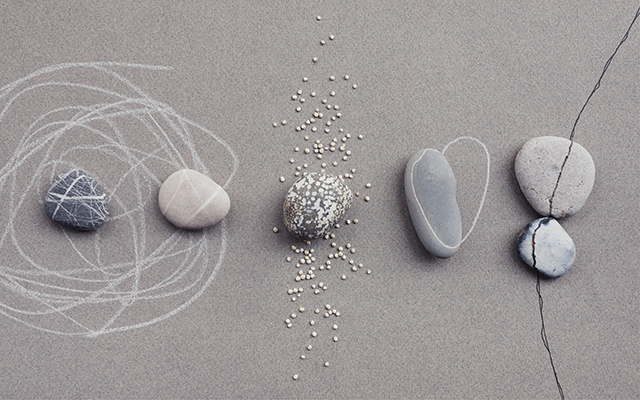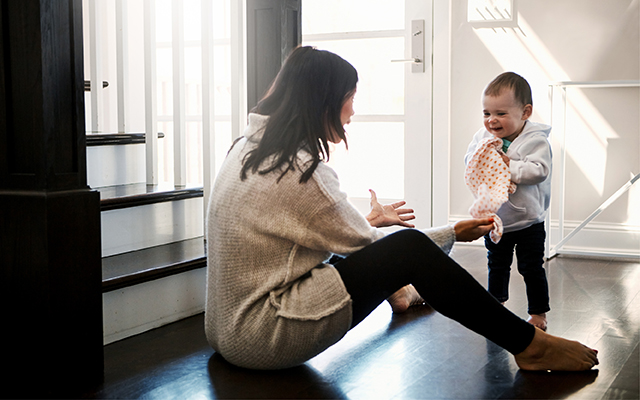People come to yoga for many reasons. Maybe they’ve heard it will help them relax and better manage stress; perhaps they want to become stronger, finally be able to touch their toes, or lose weight.
Yoga often delivers these emotional and physical benefits, but what many practitioners ultimately discover is that yoga changes their lives by helping them be more loving and intimate in relationships.
Yoga teaches that our primary relationship is between the mind and body, and this forms the foundation of every other relationship. Remember, the word “yoga” means “to yoke or to join together.” When the mind and body are joined, our personal relationships become stronger; when they’re disconnected, our personal relationships suffer — and so do we.
Have you ever felt stuck in your head, always criticizing, analyzing, or trying to intellectualize things? Have you felt controlled by the drives and desires of your body, succumbing to impulses and cravings you know don’t serve you? These disconnects prevent you from accessing the wisdom of your heart and the balance of your mind. Worse, they can trigger self-judgment, insecurity, ambivalence, frustration, and anger — reactive emotions that affect you and everyone around you.
Yoga emphasizes bringing the body and mind together, and it empowers you to see more clearly and accept yourself with compassion. When you do that, your capacity to love others — boldly and unconditionally — grows. What begins as an effort to change for your own benefit becomes a way to enhance every life you touch.
Integrating Mind and Body
The physical practice of yoga addresses the mind–body conflict head-on. For a lot of people, just walking into a yoga class sets their minds spinning: I’m not strong enough (or fit enough or flexible enough) to be here. Challenging poses evoke feelings of self-doubt and mental aversion: I don’t like this. I don’t know if I can make it. My muscles ache!
The mind quits long before the body does — which is why a yoga posture doesn’t really begin until you want to come out of it.
Struggling with the physical practice of yoga exposes the barrier between your mind and body. Once you see this wall, you can begin the work of removing it. You do this by focusing on your breath and bodily sensations.
Breathing slowly and deeply as you practice will help you relax, even as you move through a difficult sequence of postures. As your practice grows and you learn to return again and again to the rhythm of your breath, you’ll find that you don’t have to react to every thought or sensation. You might even notice that most of your thoughts are really delusions.
Physical discomfort and mental agitation inevitably fade, sometimes within moments, and then new sensations arise. You’ll begin to recognize this pattern and realize that all things, including your thoughts about yourself, are impermanent.
Working with your breath and sensations, you’ll stop forcing your body into poses and instead use poses to get into your body. Each yoga pose then becomes an opportunity to develop a strong, balanced mind. This is integration — when barriers between mind and body begin to dissolve and your perspective about your circumstances starts to shift.
The Paradox of Self-Acceptance
We often try to improve ourselves without first accepting the things we dislike. But one of life’s greatest paradoxes is that unless you accept yourself as you are in this moment — believing you’re exactly who you’re supposed to be — there’s no way to grow further. As psychologist Robert Holden, the coauthor of Life Loves You: 7 Spiritual Practices to Heal Your Life, puts it, “No amount of self-improvement can make up for a lack of self-acceptance.”
Like the physical breath, an attitude of self-acceptance creates a sense of relaxation and ease in your body and mind. When you relax, you can observe yourself more honestly and compassionately; you can see that your vulnerability is actually a strength. In the open spirit of self-acceptance lie the seeds of transformation and growth.
As you ease into the waves of physical and mental perception that rise and fall with each breath, you will start to feel more at peace with things as they are — even though they’re not perfect. More important, you’ll begin to accept yourself as you are.
Over time, your yoga may mature from an ego-centered practice characterized by self-judgment to a breath-centered experience in which you cultivate self-acceptance. You’ll eventually arrive at a heart-centered place where you’ll begin to experience unconditional love.
Yoga From the Heart
By now you might suspect that “success” in yoga has nothing to do with the depth of your backbends or the number of arm balances in your repertoire. Instead, it’s about how much you can open your heart. With a mature yoga practice, you can find love and equanimity even in tough situations.
Indeed, some of the greatest tests of your practice will arise in your most intimate relationships. The people closest to you know how to push all your buttons. As meditation teacher Ram Dass once said, “If you think you’re enlightened, go home for Thanksgiving.”
Behaving with love and equanimity doesn’t mean you are weak or passive; not reacting doesn’t mean not responding. Instead, it means you are able to observe a challenging situation without getting caught up in it.
When someone says something insensitive or unkind, for example, you won’t identify with it or take it personally. You’ll come to your breath and realize you have other choices. You can choose unconditional love — accepting the other person and even offering goodwill toward him or her without expecting anything in return.
Yoga is training for life. Using your breath to integrate the energies of your body and mind, you can harness the power and wisdom of both. By accepting yourself as you are — and others in your life as they are — in each moment, you’ll find ease and spaciousness in which to grow. In opening yourself to others, you’ll discover that everyone in your life can also teach you how to love.




This Post Has 0 Comments